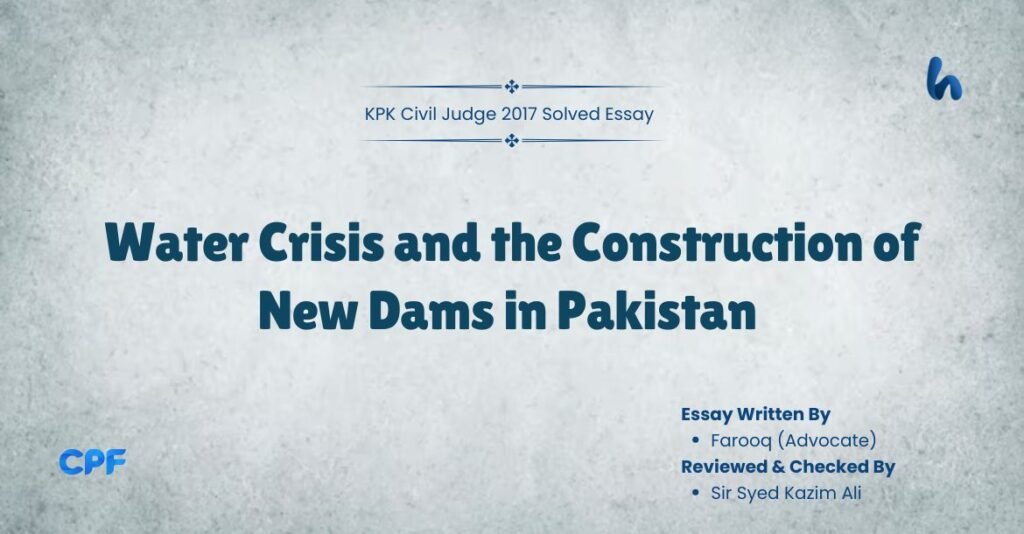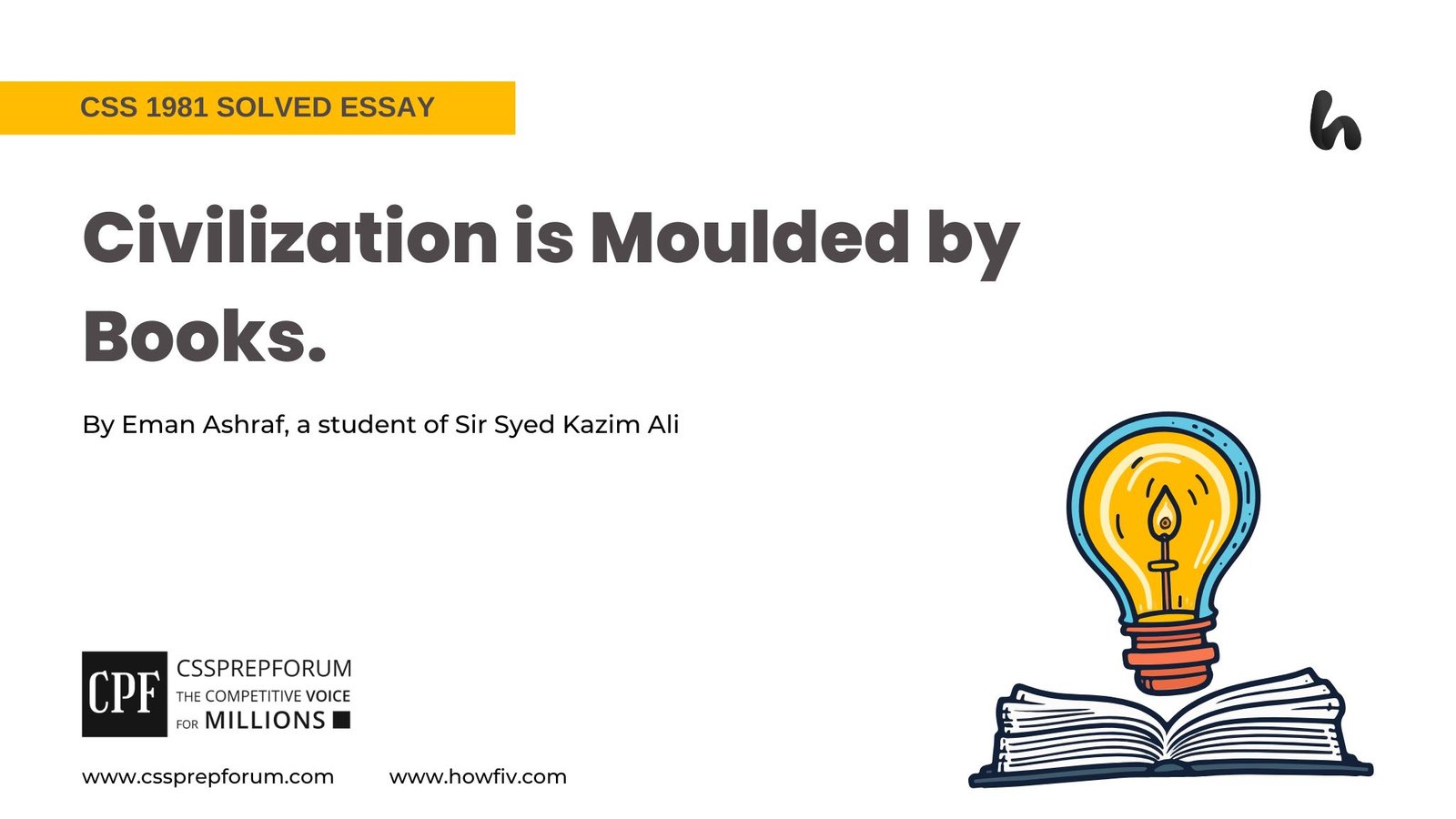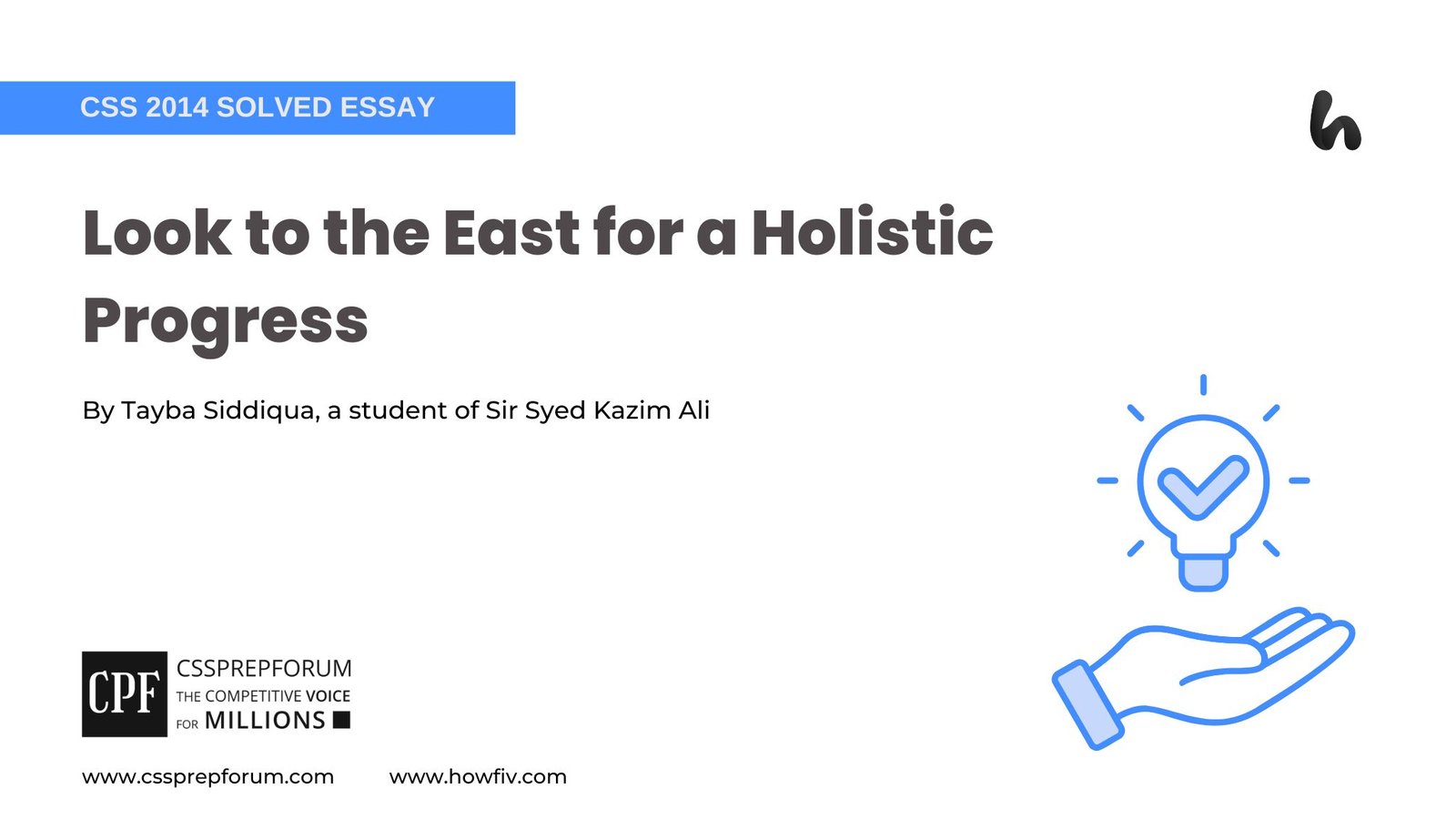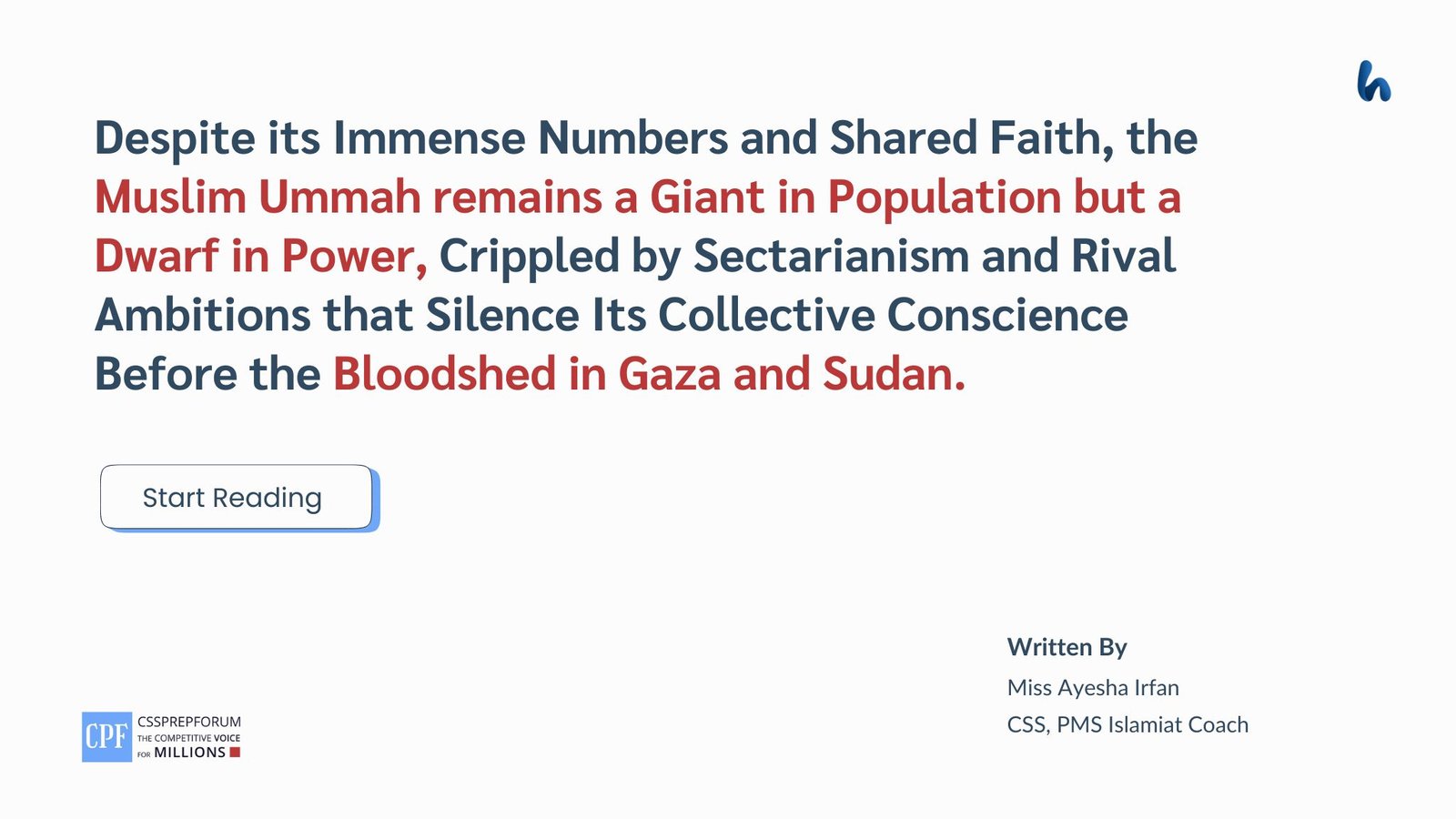Advocate Farooq, a Sir Syed Kazim Ali student, has attempted the Civil Judge KPK 2017 Five Paragraph Essay “Water Crisis and the Construction of New Dams in Pakistan“ on the given pattern, which Sir Syed Kazim Ali teaches his students. Sir Syed Kazim Ali has been Pakistan’s top English writing and CSS, PMS essay and precis coach with the highest success rate of his students. The essay is uploaded to help other judiciary and competitive aspirants learn and practice essay writing techniques and patterns to qualify for the essay paper.

Water Crisis and the Construction of New Dams in Pakistan
Outline
1-Introduction
The water crisis in Pakistan is a severe challenge affecting agriculture, industry, and daily life, but the construction of new dams is a crucial solution to ensure water conservation, hydroelectric power generation, and flood control.
2-Why is Pakistan facing a water crisis?
- Rapid population growth, climate change, and inefficient water management are depleting Pakistan’s water resources.
- Evidence: According to the International Monetary Fund (IMF, 2018), Pakistan ranks third among the most water-scarce countries.
3-How can new dams help conserve water and generate electricity?
- Dams store excess water for use during dry periods and provide hydroelectric power to reduce reliance on fossil fuels.
- Evidence: Pakistan loses 21 million acre-feet (MAF) of water annually due to a lack of storage (Pakistan Water Gateway, 2021).
4-How can new dams help prevent floods and boost agriculture?
- Properly designed dams regulate river flow, reducing the risk of floods while ensuring steady irrigation for crops.
- Evidence: The 2010 floods in Pakistan caused $10 billion in economic losses and displaced 20 million people (Asian Development Bank, 2011).
5-Conclusion
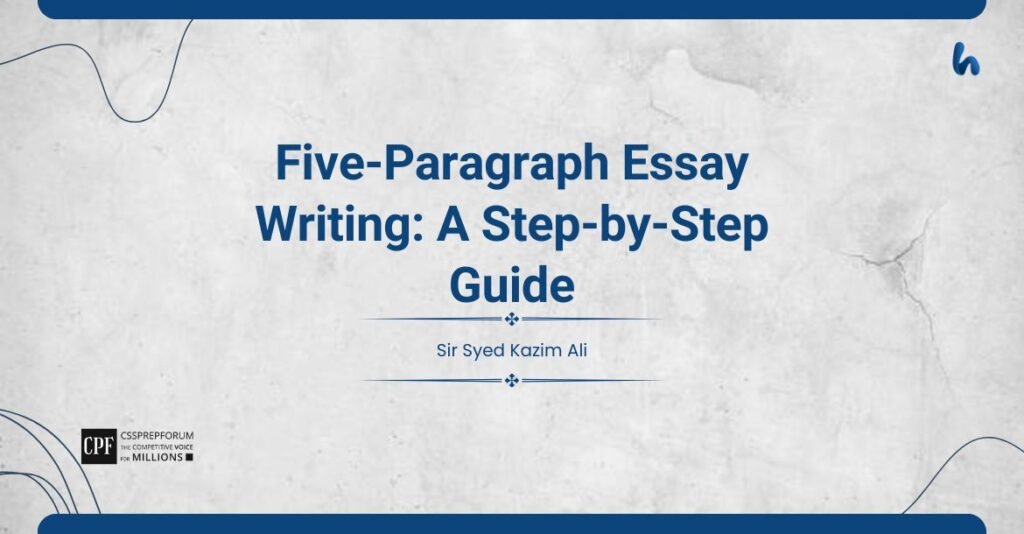
The Essay Begins Below!
Water is the lifeblood of any nation, yet Pakistan is on the verge of an alarming water crisis. With a rapidly growing population, climate change, and inefficient water management, the country’s per capita water availability has plummeted to 908 cubic meters, dangerously close to absolute scarcity, according to the Pakistan Council of Research in Water Resources, 2022. If this crisis remains unaddressed, Pakistan may face severe droughts, food insecurity, and energy shortages in the near future. Therefore, constructing new dams offers a practical solution by ensuring sustainable water conservation, generating renewable hydroelectric power, and mitigating devastating floods. Without urgent action, the water crisis, for sure, continues to threaten Pakistan’s economic stability and national security. Thus, prioritizing dam construction is essential to safeguarding the country’s future.
To begin with, Pakistan is facing a severe water crisis due to rapid population growth, climate change, and inefficient water management. Over the past seven decades, the country’s population has surged from 34 million in 1951 to over 240 million in 2023, leading to an unprecedented rise in water demand. According to a 2023 report by the Pakistan Bureau of Statistics, this rapid growth has placed immense pressure on the country’s already limited water resources. As more water is consumed for domestic, agricultural, and industrial purposes, the supply cannot meet the demand. Additionally, climate change has worsened the situation, as glaciers in the Himalayas are shrinking at an alarming rate, reducing the flow of the Indus River, Pakistan’s primary water source. With unreliable rainfall and depleting groundwater, the water crisis continues to intensify. Furthermore, the World Bank (2022) estimates that 60% of water in Pakistan is wasted due to outdated irrigation systems. Poor infrastructure and inefficient water usage in agriculture further exacerbate the problem. Given these alarming factors, it is evident that if immediate steps are not taken, Pakistan may soon experience an irreversible water shortage, posing a major threat to food security and economic stability.
In addition to addressing water shortages, constructing new dams is essential for water conservation and energy production. Due to insufficient reservoirs, Pakistan loses 21 million acre-feet (MAF) of water annually, resulting in massive wastage. Without proper storage, much of the rainfall and river water is lost instead of being utilized during dry seasons. However, the Diamer-Bhasha Dam will add 8.1 MAF of storage, ensuring a stable water supply throughout the year. In addition to water conservation, dams play a crucial role in hydroelectric power generation. Pakistan has a total hydroelectric potential of 60,000 MW, yet only 16% is currently utilized, highlighting a vast untapped resource. The Mohmand Dam, once completed, will generate 800 MW of electricity, reducing reliance on costly and polluting fossil fuels. Hence, dam construction is a crucial step toward national sustainability by addressing both water scarcity and energy shortages.
Most importantly, new dams are vital in flood prevention and agricultural development. Uncontrolled river flows frequently lead to devastating floods, such as the 2010 disaster, which resulted in $10 billion in damages and displaced 20 million people. Without proper water regulation, excessive rainfall and glacier melting cause widespread destruction, damaging infrastructure and displacing communities. However, well-constructed dams help mitigate these disasters by controlling water release. The Tarbela and Mangla Dams currently provide irrigation for 35 million acres of farmland, ensuring a stable water supply for crops throughout the year. Additionally, efficient water storage significantly enhances agricultural output. According to the Food and Agriculture Organization, improving water infrastructure can increase agricultural productivity by 20%. Thus, new dams can effectively strengthen Pakistan’s food security and economic stability by preventing floods and ensuring irrigation.
In conclusion, Pakistan’s worsening water crisis demands immediate action, and the construction of new dams offers the most effective solution. By conserving water, generating renewable energy, and preventing floods, dams address multiple national challenges. With 21 MAFs of water lost annually and only 16% of hydroelectric potential utilized, the need for infrastructure development is urgent. Moreover, floods like the 2010 disaster caused $10 billion in damages, highlighting the importance of water regulation. Without new dams, Pakistan risks severe water shortages, economic decline, and food insecurity. Therefore, investing in dam construction is essential for securing the nation’s future.
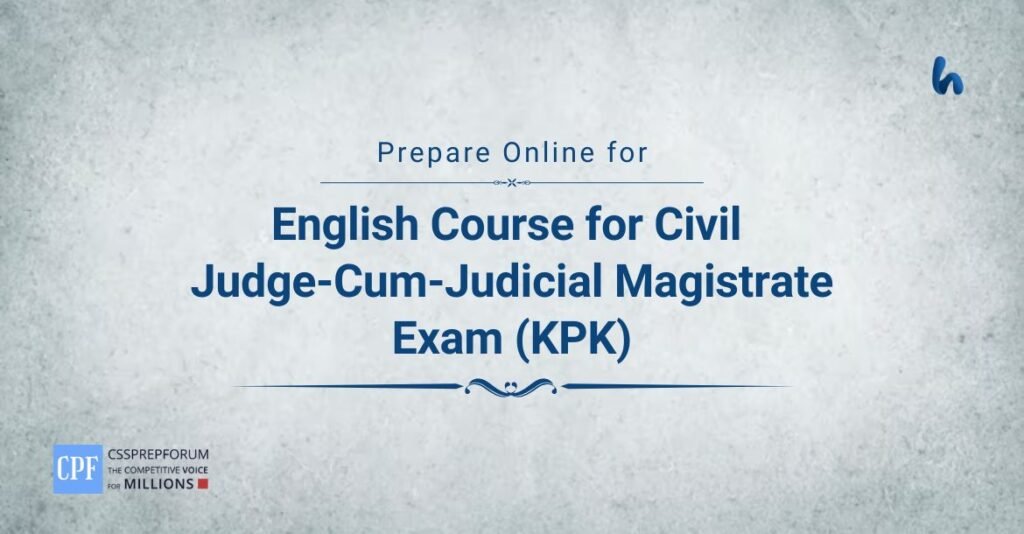
Click on Any to Start Reading
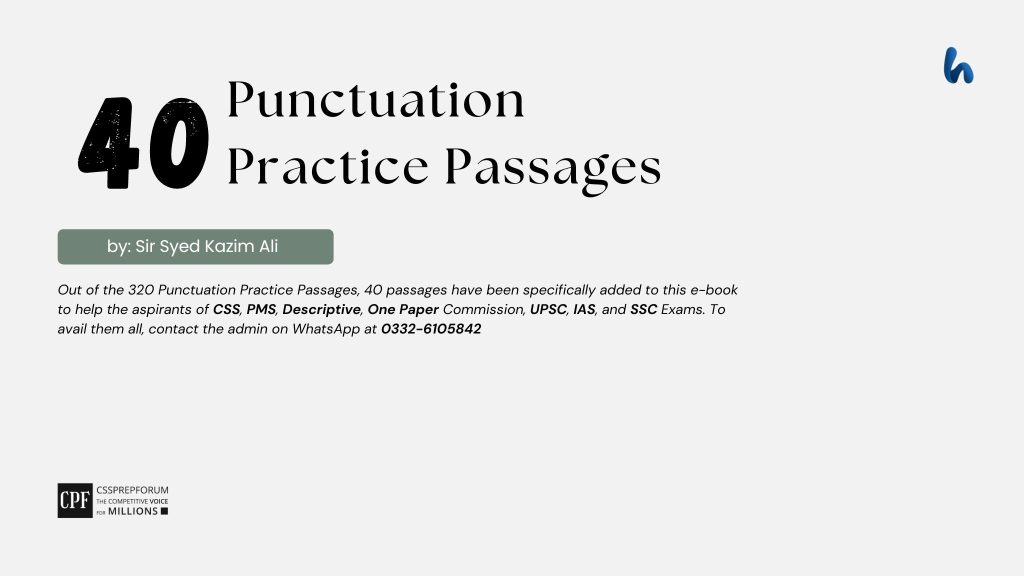


FAQs About Sir Syed Kazim Ali

CSS Solved Past Papers’ Essays
Looking for the last ten years of CSS and PMS Solved Essays and want to know how Sir Kazim’s students write and score the highest marks in the essays’ papers? Then, click on the CSS Solved Essays to start reading them.
CSS Solved Essays
CSS Solved General Science & Ability Past Papers
Want to read the last ten years’ General Science & Ability Solved Past Papers to learn how to attempt them and to score high? Let’s click on the link below to read them all freely. All past papers have been solved by Miss Iqra Ali & Dr Nishat Baloch, Pakistan’s top CSS GSA coach having the highest score of their students. General Science & Ability Solved Past Papers

